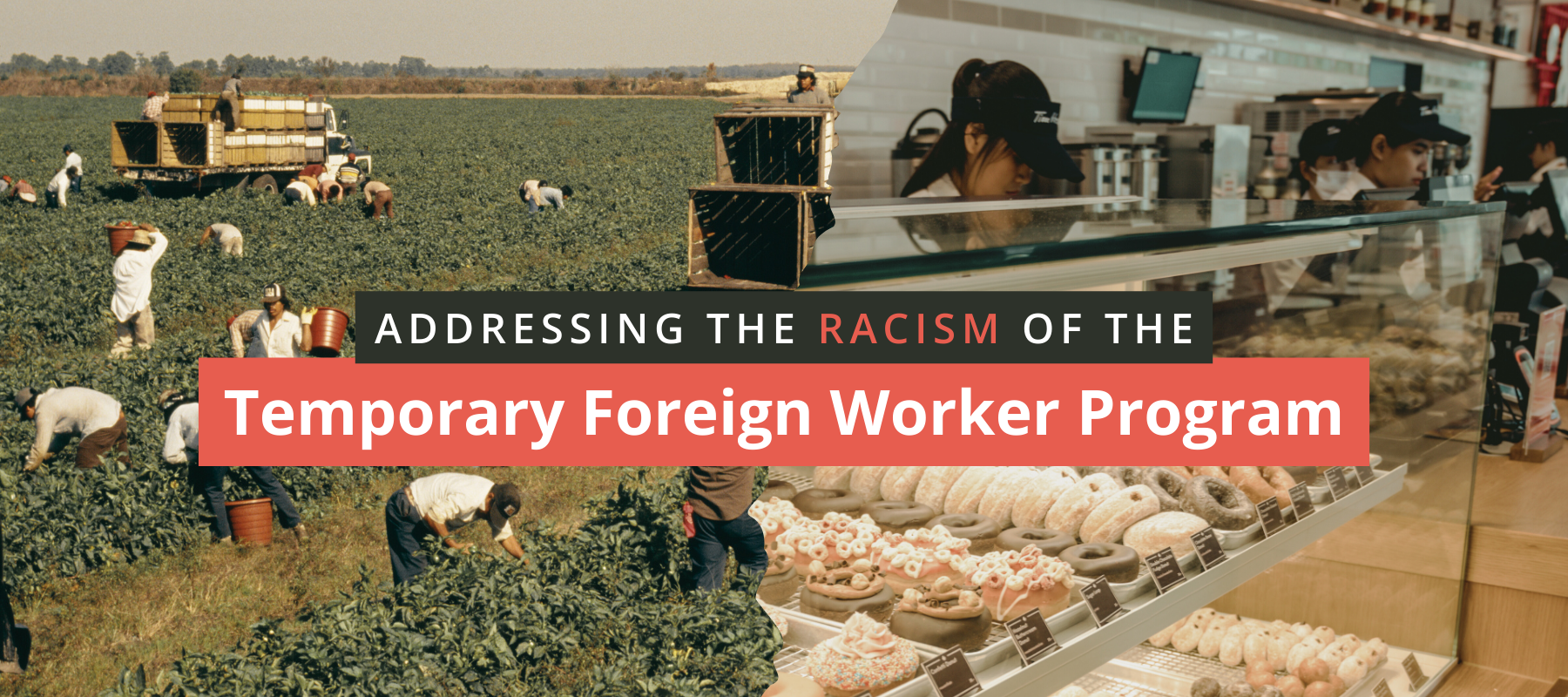Temporary Foreign Worker Program changes – who do they help?
The Conservative Government’s Minister of Employment and Social Development, Jason Kenney, announced on June 20th 2014 a draft of changes to the federal Temporary Foreign Worker Program (TFWP). The program has attracted controversy since at least 2006, most recently when the CBC reported that MacDonald’s outlets in Victoria were favouring temporary foreign workers over Canadians in hiring decisions and the allocation of hours.
The 2006 census recorded a 118% increase, since 1996, in the number of adult non-permanent residents who were working in Canada. Research by Statistics Canada has shown that “the number of non-permanent residents who entered Canada in 2008 (399,523) exceeded the number of permanent immigrants of all types landed that year (247,243).” In other words, Canada admitted more people on temporary visas than people with the right to remain permanently in the country. This increase in temporary migrants has met with contradictory responses, even within provinces seen to benefit most. The argument that provincial labour markets (like Alberta’s) suffer shortages in key areas has been countered with the response that all regions of Canada still suffer from unemployment, and that temporary foreign workers (TFWs) take jobs from Canadian workers.
The Temporary Foreign Worker Program has been the fastest growing component of non-permanent admissions to Canada. The TFWP has four streams: agricultural workers, live-in caregivers, higher skilled occupations and lower skilled occupations. The lower skilled occupation stream has seen the biggest increase. Employers who want to hire TFWs have to obtain a positive labour market opinion (LMO) from Employment and Social Development Canada – an LMO is essentially a labour market test to determine if the employer is justified in hiring a migrant worker. The number of TFW positive labour market opinions doubled between 2005 and 2012 in sectors like manufacturing and mining, oil and gas, and increased more than seven-fold in construction. Even more striking, though, is the increase from 4,360 to 44,740 during the same period in accommodation and food services positions (see here). The ‘low skilled’ route is therefore the part of the program targeted by the recently announced reforms. These include a cap to limit the proportion of low wage TFWs that a business can employ, a reformed labour market assessment process (LMOs are being changed to Labour Market Impact Assessments, or LMIAs), and a refusal to process applications for low-skilled positions in accommodation, food services and retail in regions with more than 6% unemployment.
The argument, and justification for reforms, is that the TFWP has distorted local labour markets by keeping wages down and creating a vulnerable workforce with little to no labour market mobility. These arguments focus on the perceived threat to Canadian workers. What about the conditions faced by migrant workers themselves? As the Government’s own data has shown, migrant workers are more likely than Canadian workers and recent immigrants to be underemployed (in 2006, 85% of non-permanent resident housekeepers and 55% of cleaners had completed postsecondary training) and to have lower weekly earnings. The proposed changes to the TFWP restrict the length of permits in the low wage stream to 1 year. They do not address the persistent problems of exploitation that result from the precarious legal status of TFWs. These include being tied to the sponsoring employer (making it difficult to leave abusive or exploitative situations), poor quality and/or expensive tied accommodation, and a lack of access to collective representation. Most importantly, the changes to the TFWP do not answer the question: if someone’s skills are needed in Canada, why can’t he or she immigrate with full rights to permanent settlement?
These are significant gaps in what the reforms address, but equally significant is the fact that they don’t even touch on problems with the Live-in Caregiver Program (LCP) and agricultural streams. This is because, unlike hospitality and food services work, ‘low skilled’ agricultural and care jobs are seen as ones that Canadian citizens and those with permanent residence will not do. The LCP requires workers to live with their employer as a condition of their visa, leading to well-documented problems with excessive working hours, non-payment of over-time, and a lack of privacy and personal space. Workers cannot in practice bring their dependents, enforcing long periods of separation within families. Many caregivers are nurses and teachers but are de-skilled through years spent in low wage care work, with no access to programs for upgrading skills and qualifications. In all of these ways, the LCP also creates labour market distortions by creating a pool of precarious workers who must accept the requirement to live-in – as the Philippine Women’s Centre puts it, to ‘mortgage themselves’ for the hope of remaining in Canada. Workers in the Seasonal Agricultural Worker Program must also live in employer-provided accommodation (often onsite) and have no path to settlement, even though many are hired year after year to work on Canadian farms.
In the cases of the LCP and SAWP, then, labour market ‘distortions’ are justified by the need for low paid workers in the sectors that provide our basic needs: food and care. In the latter case, they prevent the provincial and federal Governments from having to address the ‘care deficit’ that results from a lack of public investment in childcare and homecare for the elderly. In all sectors they prevent employers from having to raise wages and improve conditions to attract workers. It is striking that both the Government and the big corporations like Tim Hortons and McDonald’s, so keen to tout the ‘free market’ and theories of supply and demand under other circumstances, cry foul when labour shortages mean they might be forced to raise wages and improve conditions to attract workers. Even more pernicious is that way that the TFWP, in protecting businesses from pressures on their profits, applies conditions that make it difficult to impossible for the workers who do these vital jobs to make Canada their permanent home. The program devalues the work done by employees on these visas by designating them as ‘low skilled’, even when workers’ qualifications match or exceed those required for other streams. Jason Kenny’s changes do not address any of these issues. He might claim to be putting Canadian workers first, but he is hardly playing fair with Canadian immigration policy.
Kendra Strauss is an Assistant Professor of Labour Studies at Simon Fraser University, and a research associate with the CCPA’s BC Office.
Topics: Employment & labour, Immigrants & refugees


